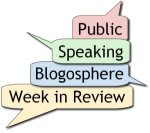Self-centric speakers deliver the speech they want to give, without concern for who is in the target audience or what they may be thinking, feeling, or wanting.
Audience-centric speakers deliver the speech which the audience wants to hear, using words, concepts, stories, and visuals which will resonate with audience members and lead them to action.
But how do you know what the audience wants to hear? How do you know what will resonate with them? How do you know what they are thinking?
In this article, we define what audience analysis is, and look at the types of questions you should be asking about your audience.
Continue Reading »









































